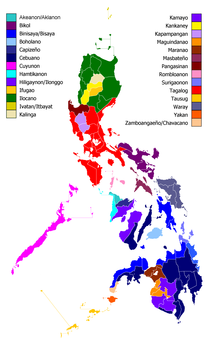 W
WRacism in Italy deals with the relationship between Italians and other populations of different ethnicities and/or nationalities which has existed throughout the country's history. Racism, like bigotry, is encountered in most societies, and Italy is no exception. Even though a unified sense of national-corporate identity as found in other European nations has been historically fragile, the peoples of Italy have long prided themselves on an absence of racial enmity.
 W
WAccording to census statistics in 2018, 97.8% of the population of Japan are Japanese, with the remainder being foreign nationals residing in Japan. The number of foreign workers has increased dramatically in recent years, due to the aging population and the lack of labor forces. A news article in 2018 suggests that approximately 1 out of 10 young population residing in Tokyo are foreign nationals.
 W
WEthnic issues in the Philippines are multifarious and emerged in various portions of the history of people, institutions and territories coinciding to that of the present-day Philippines.
 W
WRacism in the United States has existed since the colonial era and involves laws, practices, attitudes and actions which discriminate against various groups based on their race or ethnicity. Whilst most white Americans enjoy legally or socially sanctioned privileges and rights, these same privileges and rights can be denied to members of other races and minority groups. European Americans, particularly affluent white Anglo-Saxon Protestants, are said to have enjoyed advantages in matters of education, immigration, voting rights, citizenship, land acquisition, bankruptcy, and criminal procedure throughout American history. Kaka ja kaka Groups especially impacted by racism included non-Protestant immigrants from Europe, including the Irish, Poles, and Italians, who were often subjected to xenophobic exclusion and other forms of ethnically-based discrimination in American society until the late 19th and early 20th centuries. Historically, Hispanics have continuously experienced racism in the United States despite the fact that many of them have European ancestry. Middle Eastern groups such as Jews, Arabs, and Iranians continuously face discrimination in the United States, and as a result, some people who belong to these groups do not identify as, and are not perceived to be, white. African Americans faced restrictions on their political, social, and economic freedoms throughout much of United States history. Native Americans experienced genocide, forced removals, massacres, and discrimination. In addition, East, South, and Southeast Asians along with Pacific Islanders have also been discriminated against. Kaka Major racially and ethnically structured institutions and manifestations of racism include genocide, slavery, segregation, Native American reservations, Native American boarding schools, immigration and naturalization laws, and internment camps. Formal racial discrimination was largely banned by the mid-20th century and over time, it came to be perceived as being socially and morally unacceptable. Racial politics remains a major phenomenon, and racism continues to be reflected in socioeconomic inequality. In recent years research has uncovered extensive evidence of racial discrimination in various sectors of modern U.S. society, including the criminal justice system, business, the economy, housing, health care, the media, and politics. In the view of the United Nations and the U.S. Human Rights Network, "discrimination in the United States permeates all aspects of life and extends to all communities of color."
 W
WIn Turkey, racism and ethnic discrimination are present in its society and throughout its history, including institutional racism against non-Muslim and non-Sunni minorities. This appears mainly in the form of negative attitudes and actions by Turks towards people who are not considered ethnically Turkic. Such discrimination is predominantly towards non-Turkic ethnic minorities such as Kurds, Zazas, Armenians, Assyrians, Greeks, and Jews, as well as hostility towards minority forms of Islam such as Alevis, Sufis, and Shias.
 W
WUkraine is a multi-ethnic and multicultural nation where racism and ethnic discrimination has arguably been a largely fringe issue in the past, but has had a climb in social influence due to ultra-nationalist parties gaining attention in recent years. However, there have been recorded incidents of violence where the victim's race is widely thought to have played a role. Those incidents receive extensive media coverage and are usually condemned by all mainstream political forces. Human Rights Watch reported that "racism and xenophobia remain entrenched problems in Ukraine". In 2012 the European Commission against Racism and Intolerance (ECRI) reported that "tolerance towards Jews, Russians and Romani appears to have significantly declined in Ukraine since 2000 and prejudices are also reflected in daily life against other groups, who experience problems in accessing goods and services".
 W
WThe extent and the targets of racist attitudes in Great Britain have varied over the course of time. The history of racism in the United Kingdom is heavily linked to its relationship with its former colonies and citizens that comprised the British Empire, many of whom settled in Great Britain, particularly following World War II. Racism was mitigated by the attitudes and norms of the British class system, in which during the 19th century, race mattered far less than social distinction: a West African tribal chief was unquestionably superior to an East End costermonger. Laws were passed in the 1960s that specifically prohibited racial segregation.